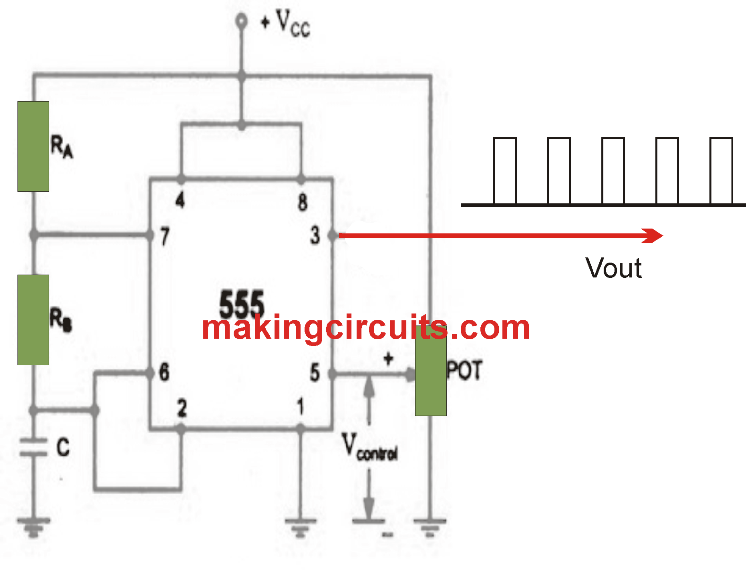A neat little voltage controlled oscillator circuit could be designed and applied for a given purpose using a single IC 555 and a few other passive components, let's learn about this simple yet useful circuit from the following discussion.
How the Circuit Works
A voltage controlled oscillator (VCO) employing timer 555 is demonstrated in the following diagram.

The circuit is oftentimes known as voltage-to-frequency converter, considering that the output frequency could be transformed by changing the input voltage.
As expressed in earlier content, terminal pin 5 is the voltage control terminal and its particular functionality is to control the threshold and the trigger level. Generally, the control voltage is + 2/3 V DC, due to the internal voltage divider.
Even so, an external voltage could be placed on this terminal directly or by way of a pot, as highlighted in the figure, through altering the pot, the control voltage could be varied.
Voltage over the timing capacitor is displayed in the figure, that can vary between + V control and ½ V control. When the control voltage is elevated, the capacitor requires a lengthier time to charge and discharge, the frequency, consequently, diminishes. Therefore, the frequency could be improved by changing the control voltage linearly.
Waveform Generated across the IC 555 pinouts
It would be also interesting to learn what kind of waveform are initiated across the various pinouts of the IC 555.
When a varying voltage is applied at the control input of the IC, the amplitude of the triangle waves across the timing capacitor or between the pin#6/2 and the ground also proportionately varies. Higher voltages at pin#5 causes higher amplitude on the triangle waves and vice versa

However the pin#3 of the IC produces an entirely different response for this voltage controlled oscillator circuit. The pin#3 generates a PWM waveform whose duty cycle varies exactly in proportion with the level of voltage applied at pin#5 of the IC.
How to design sinusoidal VCO using 555 times ic
By using a push-pull BJT stage at pin#3 of the IC